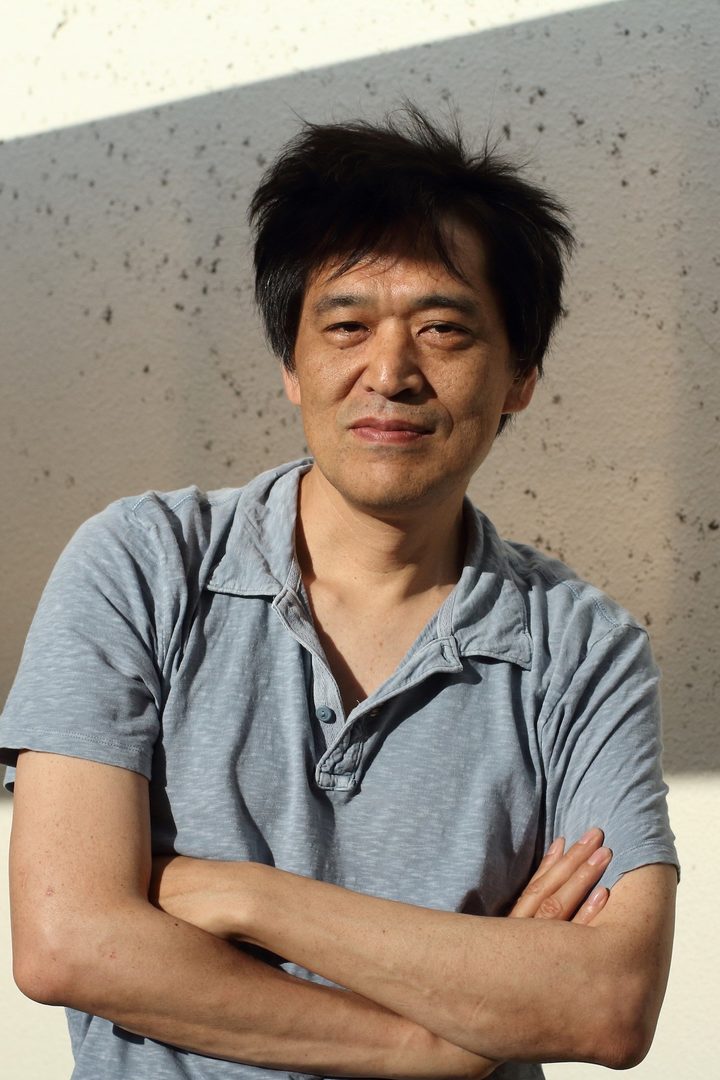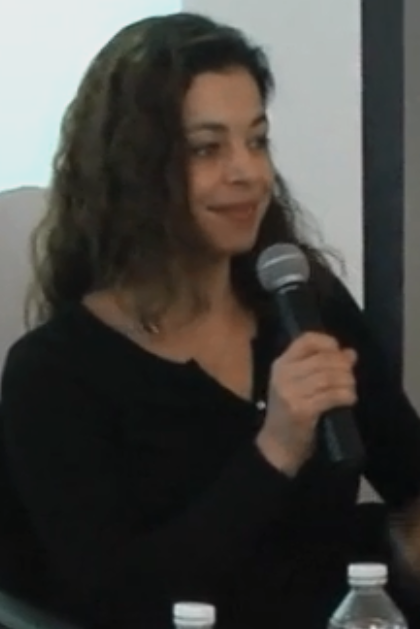Speakers - ECogS 2020
Keynotes

Title: "Is anyone an embodied ethologist?"
Abstract: Embodied cognition (and other associated e-words that characterise the new cognitive science) has been embraced enthusiastically by many in philosophy of mind and cognitive science. So far, it has had much less impact that might be expected within psychology, and in comparative psychology/cognitive ethology in particular. Why should this be? Two options suggest themselves. One is that people are producing work in embodied cognition all the time, and just don’t realise that’s what they’re doing, or don’t label their work as such. The other is that people working in comparative cognition are perfectly happy with their current theoretical framework, and don’t see the need for change or even consider embodied cognition to be irrelevant to their concerns. Here, I consider these options and offer a view on whether and how embodied cognition has fulfilled its promise in explaining animal cognition. I also identify the challenges that remain with respect to developing an embodied animal cognition (both theoretically and empirically), and to persuading those of a cognitivist bent that this paradigm has much to offer them.

Title: "35 Years of Brain-Body-Environment Systems"
Abstract:
What is now called embodied cognition has a long and complicated history that winds its way through many fields and partially overlaps with many other conceptual controversies. In this talk, I will give a personal perspective on embodied cognition. Specifically, I will trace the development of the idea of a brain-body-environment system as I experienced it from its beginnings in the mid 1980s to the present day. Along the way I will try to explain where these ideas came from, the problems they were originally trying to solve, what has been accomplished so far, and where they are headed in the future.

Title: "Prediction and the Embodied Mind"
Abstract:
Human minds, it has been argued, are embodied and sometimes even ‘extended’ – reaching beyond the bounds of skin and skull to inhere in unified processing regimes spanning brain, body, and world. Human brains, it has also been argued, are multi-level prediction machines that help minimize errors in our embodied encounters with the world. In this exploratory talk, I examine some of the many ways in which these two pictures relate and interact – especially when time horizons expand and actions are selected to minimize expected future prediction error. What emerges is once more a picture of neural processing as deeply woven into its bodily and socio-technological settings. But within that tight, dense, multi-scale weave we now spot a surprising continuity of strategic interventions and some common processing motifs underlying action, reason, and perception.

Title: "Personogenesis and Offloaded Agency"
Abstract: We propose a new imitation humanoid robot called ALTER-3. ALTER-3 mimics human poses with his camera eyes and an internal build-in simulator, pre-simulating his own future actions. Alter-3 also stores action sequences in the memory layer. The purpose of this talk is to study how this mimicry works and how to quantify it using transfer entropy, U-map compression, and other techniques. This provides a new approach to study guided self-organization of cognitive robots..

Title: "Technology and Enaction: Spatial Perception and Social Cognition."
Abstract:
In August 1997, the second edition of the International Conference on Cognitive Technology was held in Aizu Wakamatsu, Japan. On this occasion, I presented for the first time a minimalist experimental method for fundamental research on perception and technical mediations, a method that we developed over the next 20 years. Starting from this first paper I will present the general research program of our team in Compiègne and the perspectives that were then opening up for fundamental research (empirical and philosophical) on the role of technical tools in human cognition.
What we call "cognitive technologies" are not at all technologies that pretend to think as in the strong AI program, nor even technologies that are merely the extension of a natural human intelligence. The idea is rather that technology is constitutive of all our lived experience, of all human activities of perception, memorization, reasoning, interaction, communication and social organization. From an anthropological perspective, Bernard Stiegler, extending the work of André Leroi Gourhan, shows that the very evolution of hominids over the last millions of years, from homo habilis to sapiens, has taken place in a coupling with a technical environment. Consequently, cognitive activity must be understood as embodied in a living body endowed with organs of action and perception, capable of grasping tools, manipulating and transmitting them. For my part, at the meeting between the works of Francisco Varela on enaction and the works of Paul Bach-y-Rita, on sensory substitution systems, I proposed to study the constitutive role of coupling devices (corporeal and technical) in perceptual activity.
At this 1997 lecture I presented Paul Bach-y-Rita's TVSS and the first results of a study of depth perception, i.e. the localisation of an object there at a distance in front of us. I then also presented the perspectives opened by the proposed minimalist experimental method: systematic study of the cognitive and phenomenological effects of variations in coupling devices; inter-individual interaction through technical mediations; technological innovation for perception; interaction design and emotional values. Much of what was announced has been done.
However, the development of this scientific and technological research gradually revealed a serious insufficiency of the explanation I then proposed for spatial perception. It is impossible to account for perception at a distance if one remains in an individualistic and solitary sensorimotor framework. This is a deep and general difficulty for enactive approaches. The coupling between the organism and its environment can account for a form of perceptual state, but for a lived world (an Umwelt) to open, it is also necessary to account for the existence of a field of possibilities in which a sense-making can take place. To solve this difficulty we are now working on an interactionist approach to perception. I will present these works that broaden the experimental paradigm of perceptual crossing to understand the origin of the lived experience of separation, separation between me and others, separation between the point of view and the perceived object, in a space of possible points of view.

Title: "Current status and challenges of the sensorimotor theory of consciousness."
Abstract:
Contrary to Global Workspace - type theories, Higher Order Thought theories, Integrated Information Theory, and Predictive Coding and Free Energy type approaches that can make no pretense of solving the "hard problem" of consciousness, the sensorimotor theory seriously purports to do so. It does this by providing a way of describing (supposedly ineffable) qualia enactively, in a way that bridges the explanatory gap between experienced phenomenology and physical goings-on in the brain and body.
In my talk I shall quickly describe what's new in my book (O'Regan, 2011) compared to O'Regan & Noë (2001) (less emphasis on action, the importance of cognition and the notion of self). I shall explain why I reject autopoietic and radical forms of enactivism, and mention some conceptual challenges that remain for the theory and that need to be addressed (experiences that involve little action like smell, taste, synesthesia; emotions; the "realness" and causal efficacy of the self...).
Finally I shall describe some mathematical and empirical work we have done over the last six years on the emergence of the notion of space, on color categorization, sensory substitution, and on babies' sensitivity to sensorimotor contingencies. All of these topics raise interesting questions and suggest avenues for future research.

Title: "The Robot/AI Hype – Embodiment to the rescue?"
Abstract:
A quick look at the media tells us that Artificial Intelligence (AI) and robots are already all over and we get the impression that the “digital society” is just around the corner. Clearly, there has been enormous progress in recent years, not only in factory automation, but in social and service robots, assistive devices for the elderly, personal partner and household robots, speech-based assistants, self-driving cars and drones, as well as Deep Neural Networks, to mention but a few. In this lecture, I will argue that in spite of all these successes, there is a huge robotic/AI hype, that we need to be careful not to overstate the case and that often developments take longer than you think. Moreover, I will demonstrate that there is more to intelligence than computational power and that in order to build intelligent systems for the real world, or what has been called AGI (Artificial General Intelligence), we need to take a number concepts into account: Embodiment, self-organization, soft robotics, and scaffolding. They will be introduced and illustrated using examples from engineering and biology. I will close with a note on the “Robolounge” project, a venue or café, where instead of humans, robots take care of the well-being of the customers.
Invited talks

Title: "Juggling self-centred and other-centred perspectives, studies in touch."
Abstract: Different spatial perspectives can be taken on tactile stimuli displayed on the body surface. These stimuli can be mentally projected out of the body surface, as if they were coming from external objects or thought as being localized on the body. These possible projections answer different requirements. Indeed, on the one hand, integrating different stimuli, across sensory modalities, from a self-centred perspective is crucial for the unity of the self. On the other hand, understanding external space and communicating spatial knowledge with others requires adopting other-centred perspectives. How do we juggle these two requirements? In this talk I will review the set of study we conducted investigating how people differ in the spatial perspectives they naturally adopt. In addition, the graphesthesia task we developed allows investigating people’s ability to flexibly change spatial perspectives, a measure that is often neglected by other perspective-taking tasks. In particular, I will highlight how perspective-taking varies as a function of 1) bodily locations, 2) sensory parameters (such as visual and somatosensory deficits), and 3) social cognition (such as social intelligence and anxiety).

Title: "Love in the Time of Khepera: Autonomy, Collective Enterprise and the Rise of Robots."
Abstract:
Towards the end of the last century, a surge of interest in autonomous robotics research was enabled by the development of powerful new neural and evolutionary computing paradigms and the availability of relatively cheap research robots such as K-Team's "Khepera". Autonomous mobile robots for mine clearance, for search and rescue, for space exploration, for agriculture, and for fun were envisioned by researchers in artificial intelligence, adaptive behaviour and artificial life. While scientists and engineers worked on creating prototypes of these systems, philosophers interrogated the conceptural and theoretical foundations of the work and the implications that it might have for our understanding of ourselves.
Today, the rise of autonomous robots, vehicles, and other devices is widely accepted and we expect to interact with such systems increasingly often over the coming years. But the prospect of living alongside autonomous robots is not altogether positive. In the west at least, there is anxiety and concern about the extent to which we can trust and rely upon systems that may be very smart, but may not be very safe. If our robots learn, will they learn to do the right thing? If our robots are free to make decisions, will they decide to do the right thing?
In this talk I will consider whether one source of this anxiety is a misconstruction of the concept of "autonomy" that has its roots in early autonomous robotics research: autonomy as "rugged individualism". Under this view, autonomy is a property related to independence, freedom, self-determination, and self-sufficiency. I will argue that this conception of autonomy is not consistent with what we know of life, mind and society.
If we continue to adopt, uncritically, an individualistic conception of robot autonomy that is at odds with the fundamental nature of collective social enterprise, will we ever come to trust or even love our new robot companions?

Title: "AI Envy and Bodiless Embodiment."
Abstract:
What does it mean to have a body? Different researchers in embodied cognitive science will answer this question in different ways. In so doing, they imply different emphases for how a notion of embodiment contributes to our understanding of mind and cognition. For many, a system is embodied if it is simply in the world, moving around it, acting upon it and sensing it from different locations or in different modalities. Here the key idea of embodiment is largely a rebellion against cognitivist computationalism and the mainstream approaches in AI that focused on ‘disembodied’ goals (e.g. chess) and employed purely ‘disembodied’ (i.e. computational) AI architectures. Valuable lessons have been learned from this notion of embodiment. We have gained insight into sensorimotor contingencies; shown that internal representations are not necessary for solving cognitive tasks; and recast cognition as ‘extended,’ i.e. involving ongoing feedback loops between brain, body and world. Perhaps most importantly, we have learned to ask different questions and set different goals for our robots and test subjects.
But perhaps there are further lessons to be learned from a more stringent concept of embodiment. Some enactivist researchers emphasize how biological bodies are different from the mechanical ‘body’ of a robot. In particular, biological bodies are precarious networks of interdependent components—perpetually unstable, yet managing to persist via processes of self-maintenance and self-reconstruction. In this view, some ‘embodied robots’ are actually bodiless, but also, some entities that lack a conventional ‘body’ (e.g. social institutions, or habitual patterns of behaviour) can be thought of as embodied.
In my talk, I will focus upon this latter notion of embodiment, which researchers are using to distinguish an agent (the locus of subjective phenomena) from its environment, attempting to provide what I see as an essential first step toward understanding cognition. I will explain what benefits this perspective provides, and I hope in the process to dispel some misunderstandings about what it entails. My aim is to encourage other investigators to consider including this more stringent notion of embodiment in their own research (or alternatively to understand why they are not convinced). Along the way I will talk about what I call AI-Envy: misplaced jealousy of recent progress in conventional (disembodied) AI, and argue that we should not be pulled into using conventional AI’s bottom line (performing well at typical ‘cognitive tasks’) as our own.
Title: "Affordances, evolution, and agency."
Abstract:
This talk aims to illuminate which is the evolutionary role of affordances and its relation to agency from a Gibsonian or ecological approach. First of all, regarding affordances, there are two allegedly competing views for explaining their evolutionary role: the first is based on natural selection, the second is based on niche construction. According to the first one, affordances are resources that exert selection pressure. The second view, which is compatible with niche construction, claims that affordances are ecological inheritances in the organism’s niche that are the product of a previous alteration of the environment. Whereas there seems to be a mutually exclusive definition of affordances in each of these views, I argue that these are not competing, but complementary views. In this sense, affordances play the role of either resources or ecological inheritances depending on the temporal stage of the evolutionary process. This idea is very important for understanding agency from an ecological approach: if, according to the ecological approach, agency relies on exploration and control, the perception and taking of the available affordances of the environment play an essential role in the development of all individuals' cognitive abilities. Thus, I show how, based on Reed's (1982, 1996) theory of actions systems, agency can be understood as the repertoire of exploratory strategies that are the product of the history of interactions between organisms and their affordances.

Title: "Development of Shared representation, Perspective taking and Mirror neurons from Sensory-Motor Prediction."
Abstract:
How can we understand other people by putting ourselves in others' place? Although it is the fundamental social ability, it is not clear how the ability is realized in our brain. It is popularly believed that mirror neuron is the possible mechanism to realize such social skill. However, scientists just presuppose the existence of mirror neurons and expect them to help understanding others due to the property of the mirror neurons. There is no plausible explanation how mirror neuron develops and how it works for the social ability. I will present a new idea for a mechanism that can explain these two. Our proposed mechanism just presupposes a sharing module that processes two information flows at the same time. The mechanism is implemented with a deep neural network as a model of neural systems, which is trained to predict his own sensory-motor experiences. As a result, the two information flows are differentiated to process his own and other information and mirror neurons develop spontaneously. It will be also shown that the ability of visual perspective taking and understanding other’s motions can be achieved simultaneously.

Title: "Decentralised Embodied Selfhood."
Abstract: Embodied cognition has important implications for understanding selfhood, in particular, where it pertains to personal identity as a principle of self-other distinction. A straightforward lesson from the embodied approach would be to adopt an animalistic perspective, where selfhood is essentially defined in terms of the living organism, i.e. by its physiological structure as well as its sensorimotor activity. Importantly, however, such activity does not happen in an individualist vacuum but includes a social loop. The enactive approach allows for an embodied yet also decentralised conception of selfhood that takes the social loop to be essential for the self-other distinction. On such a decentralised conception, the self’s boundaries are not settled qua individual organismic properties, but continuously negotiated through interactive embodied engagements with other agents, which bring about both a sense of distinction from other agents and also a sense of vulnerability and interdependence. I discuss a number of conceptual implications of this view, both for understanding psychopathology, as well as the client-therapist relation. I will also present findings from a recent empirical study where we explored the tension between the sense of separation and interdependency at the level of inter-agent movement synchrony.

Title: "The role of agency in ecological sensory substitution."
Abstract:
It is widely accepted among supporters of the 4E approach to cognitive science that enactivism is an approach that emphasizes agency over the environment, while the ecological or Gibsonian approach diminishes the importance of agency in favour of the environment. However, in this talk I claim that the ecological approach includes a view on agency that is as important as the role of the environment for explaining perception and action. The main feature of this ecological approach to agency relies on the importance of exploratory movements for perceiving and acting through the detection of specific information. The role of exploration is first emphasized as a common ground for reuniting the main contributions of enactivism and ecological psychology in the area of dynamic touch. Furthermore, this emphasis on exploratory movements as key for perceiving is applied to the field of sensory substitution and perceptual learning. I will illustrate this through a series of experiments with sensory substitution devices that transform visual information into haptic information. In conclusion, here I offer an empirically-informed proposal for understanding agency as active perception under the principles of the ecological approach.

Title: "Cuttlefish camouflage and the relationship between behavior and brains."
Abstract:
The unique ability of cuttlefish, squid and octopuses to hide by imitating the colors and texture of their environment has fascinated natural scientists since the time of Aristotle. This feat is accomplished through direct neural control over the expansion and contraction of hundreds of thousands of pigment-filled cellular “pixels” known as chromatophores. We developed a multi-level video-analysis pipeline to track the dynamics of hundreds of thousands of chromatophores simultaneously. As each chromatophore is controlled by a small number of motor neurons, our behavioral measurements in this system represent an indirect ‘imaging’ from a large population of motor neurons. We observed repeated low-dimensional behavioral trajectories of chromatophore activity, suggestive of a hidden simplicity in the neural control circuitry. We will discuss the implications that this simplicity holds for perception, and place this work in the context of recent systems neuroscience work tightly linking animal behavior with neural activity in ‘sensory’ areas.

Title: "Embodied Efficacy"
Abstract: Embodied and enactive approaches to cognition and consciousness emphasise the importance of interaction and intersubjectivity in both development and our cognitive lives. Nevertheless, the specific character that these different interactional relations bring to our interactions and how this, in turn, shapes the interactional process remains under-investigated. In this talk, I will take steps towards addressing this gap by connecting ideas in classical Chinese philosophy with enactivist approaches to interaction and embodiment. I will argue that not only can enactive research help flesh out conceptions of efficacy in classical Chinese philosophy but that these concepts can, in turn, inform and clarify our embodied and enactive investigations into embodied interaction.

Title: "How interaction looks like from an agent’s perspective: A phenomenological investigation of the zero-person perspective."
Abstract:
Usually, we think that our experience is defined by the individual, first-person perspective. On the other hand, we also talk about human interaction that is by definition "beyond” an individual’s experience. Why can we believe that we can take a third-person perspective on the human interaction in which we are involved ourselves although we seem to be incapable of going beyond our individual perspective?
In my paper, I will address this question by phenomenologically reinterpreting our fundamental perspective of experience. I claim that it cannot merely be identified with, but is prior to, the first-person perspective. I suppose that in our experience, there is something like a “zero-person” perspective. This is a kind of ‘floating’ state that is dominant when there is no apparent intersubjective discrepancy. If a discrepancy occurs and the structural coupling of agents goes wrong, the “zero-person” state collapses. The strongly emphasized “first-person” perspective that is contrasted to other perspectives is an exceptional state that appears only transiently. In other cases, whether alone or in interaction with others, the basic state of our consciousness is defined by its zero-person character. I will argue the above thesis based on some empirical facts, (especially Husserlian-style) phenomenological analyses, Kitaro Nishida’s philosophy, and enactivist arguments.
Title: "Exploring Robotic Minds: Emergentist Account for Non-Reductive Consciousness."
Abstract:
This talk proposes that the mind is comprised of emergent phenomena, which appear via intricate and often conflictive interactions between top-down intentional processes involved in proactively acting on the external world and bottom-up recognition processes involved in receiving the resultant perceptual reality. This view has been tested via a series of neurorobotics experiments employing predictive coding and active inference frameworks implemented in “deep” recurrent neural network (RNN) models. With human tutoring of robots built on this model, robots develop the skills needed to generate complex actions, the concepts necessary for representing the world, and the potential for the linguistic competency required to express such experiences. Furthermore, these experiments confirm that “compositional” yet fluid thinking and acting develop with the spontaneous formation of a functional hierarchy in neurodynamic structures once proper constraints are established. Constraints include those on processing at multiple spatio-temporal scales, as well as those informed by tutoring at the level of behavioral interaction. The talk highlights an account of free will, how it emerges and becomes the contents of consciousness, as related to the studies by Libet (1985). Deterministic chaos self-organizes in the higher level of the aforementioned deep RNN model, and this can cause spontaneous shifts in motor movement patterns generated in the lower level. In the other direction, intention in the higher level can be modified in a postdictive manner in the course of minimizing the prediction error generated through conflict with perceived reality. One important implication here is that one becomes consciously aware of one’s own intention for generating action via postdiction, when the intention originally unconsciously generated is modified in the face of possible conflicts due to embodiment or potential openness in the environment. Thus, a holistic dynamics of the mind emerges as the circular causality between these two poles, top-down subjective mind and bottom-up objective world. These two poles turn out to be inseparable, entangled in the ongoing embodiment of enacted (as well as simulated) trial and error as fibers weave together to form threads into the prospective future, as Merleau-Ponty has speculated. Looking forward, the essential interaction between self and world providing for consciousness and free will can be further clarified through the close examination of nonstationary characteristics emerging from normal operations of this essential dynamical structure.
Title: "Other People: Critical Reflections on Inter-Enaction."
Abstract:
Sartre’s play Huis Clos (first performed in 1944), has one of the characters declare L’enfer, c’est les autres (“Hell is other people”). The author presents a view of human interactions as endemically distorted by each person’s anxiety about how they think other interactors have defined them – an anxiety in which each mirrors the other’s mirroring of themselves. This dramatic depiction of interpersonal contact anticipates, in a dystopic way, some of the themes of De Jaegher and Di Paolo’s influential (2007) extension of enactive theory into the territory of human inter-enaction. Inter-enaction denotes the processes whereby our interactions, and the associated social cognitions that feed and are engendered by them, involve a mutual exploration and ongoing self- and other- redefinition. This is characterized by De Jaegher and Di Paolo, memorably, as “participatory sense-making” (PSM).
PSM theory makes an important contribution to progressing towards an embodied cognitive science, not least via its associated notion of “mutual incorporation”, and its development of classic enactive notions of creature- and agent-autonomy. Building upon enactivist treatments of individual autonomy, PSM theorists suggest that the dynamics of interpersonal episodes can take on a “life of their own” – an interaction-autonomy that is both constituted by, and yet transcends and conditions, the autonomy of the individual participants.
I will show how PSM can be usefully illuminated by means of a model of recursive mutual reflection. Holding two mirrors up to each other can produce a vertiginous tunnel-effect of recurring co-mirroring, in which each mirror indefinitely captures its own reflection of the other’s co-reflection,…and so on. As cognitive beings we, too, find ourselves embroiled in an analogous co-mirroring process, in which we register, and are registered in, the other’s reflective awareness. Grasping the structural properties of this process helps us to understand the echoic resonance or pregnancy of many of our interactions – a resonance that can be a source of mutual empathy and affective reinforcement (as in the classic carer-infant dyadic relation, for example) or, as Sartre’s drama illustrates, of antipathy and disgust.
PSM theory highlights both the possibilities of mutual care and of mutual antagonism in human interaction, and can thus be seen as profoundly ethical in nature. In previous work with colleagues, I have outlined a distinctive ethical theory that takes the notion of inter-enaction as central, and that challenges the individuocentrism of much traditional ethics. I will summarize this novel account, while addressing some criticisms that have been made of the account – and others that can be made. I will also raise some questions about the adequacy and scope of application of PSM theory – for example on whether it provides a basis for a general theory of social cognition or, indeed, of sociality; and on how “participation” stands in relation to notions such as consensuality and active engagement, within the PSM framework.



